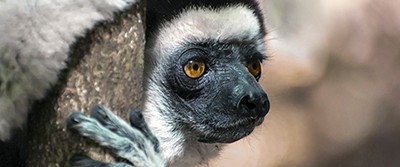New Method Finds More Species Facing Extinction

By Mae Pyer
Using a new method to assess the risk of extinction for thousands of animal species, researchers discovered that hundreds are more threatened than previously realized. This includes the red-breasted pygmy parrot and the Ethiopian striped mouse, among others.
Room for Improvement
Periodically, researchers evaluate the status of animal species and compile their findings for the International Union for Conservation of Nature’s (IUCN) Red List of Threatened Species. This list is made up of five main groups ranging from “Least Concern” to “Critically Endangered.”
Animals are categorized based on species distribution, population size and current trends. Unfortunately, this information is limited. What’s known is sometimes outdated and therefore inaccurate, leading to misclassification or a label of “Data Deficient,” meaning there’s not enough information to assess that species’ status.
Progress for Preservation
Ecologist Luca Santini and his colleagues at Radboud University recently designed a new method to efficiently and consistently predict an animal’s risk of extinction. Their study incorporated species distribution and how it changes over time, as well as models to address the likelihood of survival for animals living in disturbed habitats. Other details included habitat preferences and species abundance. This additional data complements the existing method for determining extinction risk, giving researchers the ability to make more accurate assessments.
Applying their new method, they found that 10 birds and 114 mammals are actually at risk of extinction. This accounts for 20 percent of animals in the “Data Deficient” category. Also, a total of 467 birds and 143 mammals, or 4.2 percent of all species, are more threatened than the current list suggests and should be placed in a different category.
“This indicates that urgent re-assessment is needed of the current statuses of animal species on the Red List,” said Santini.
Hopes for Automation
Santini and his team hope to automate this new method, making it easier to assess a species’ risk so the Red List is updated more frequently. They propose that the tool work in tandem with the existing strategy so the best conclusions can be reached.
The researchers acknowledge that it’s challenging to keep a growing list updated, but they hope this overall approach can act as an early warning system for species under threat of extinction.
Discussion Questions
- Visit iucnredlist.org to learn more about specific animals on the Red List and the categories they fall under. Are there any you’re surprised about? Any you haven’t heard of before or find particularly interesting?
- How does the extinction of plants and animals impact the Earth’s overall ecosystem?
Vocabulary
- Endangered
- Extinction
- Species
- Ecosystem

